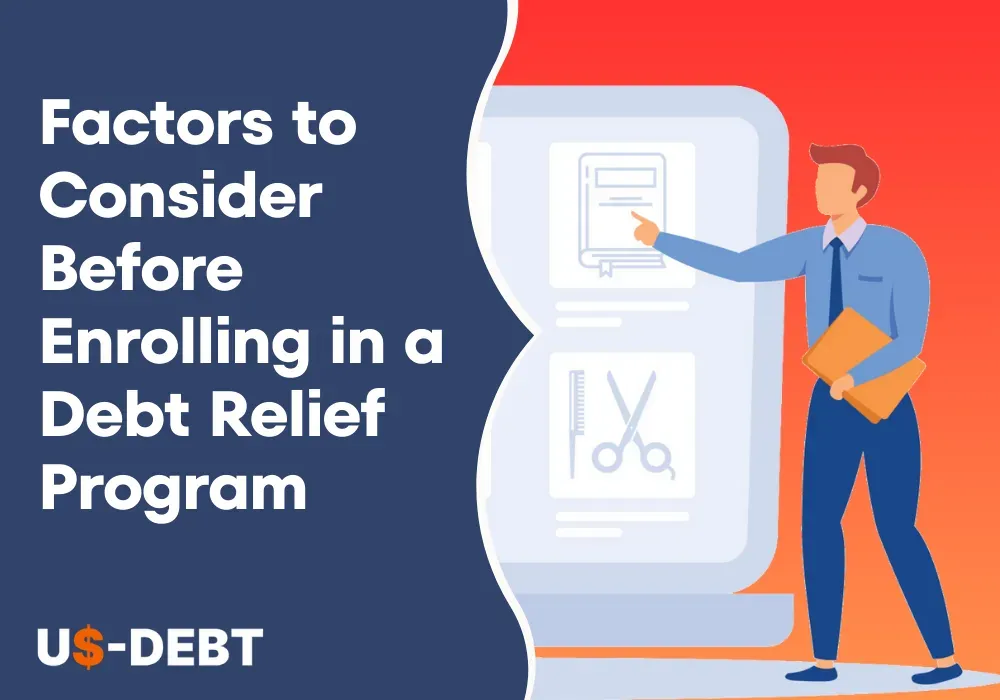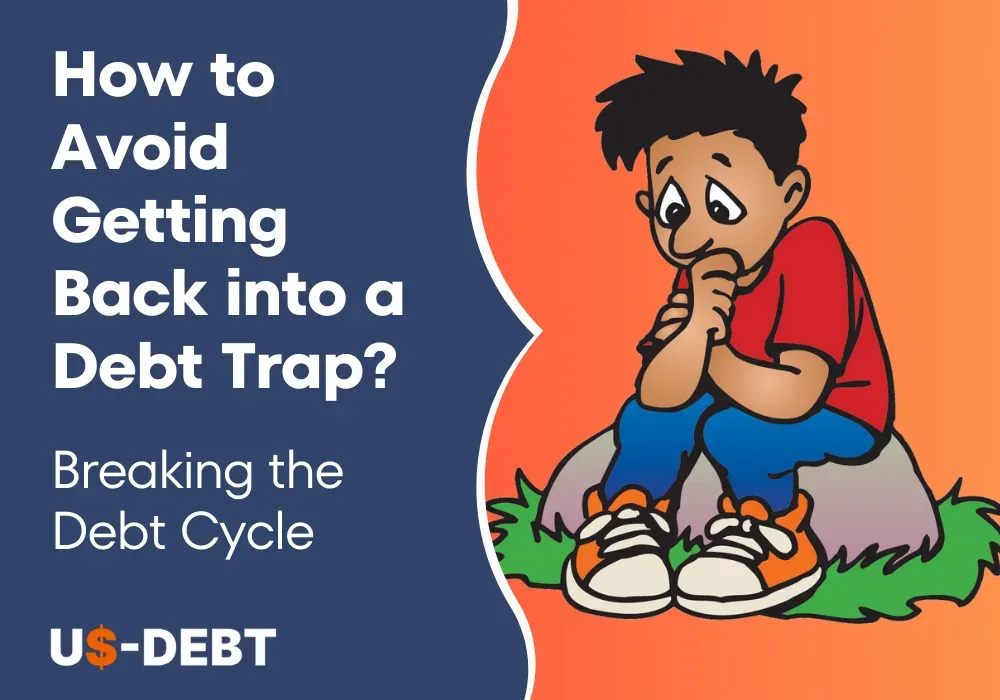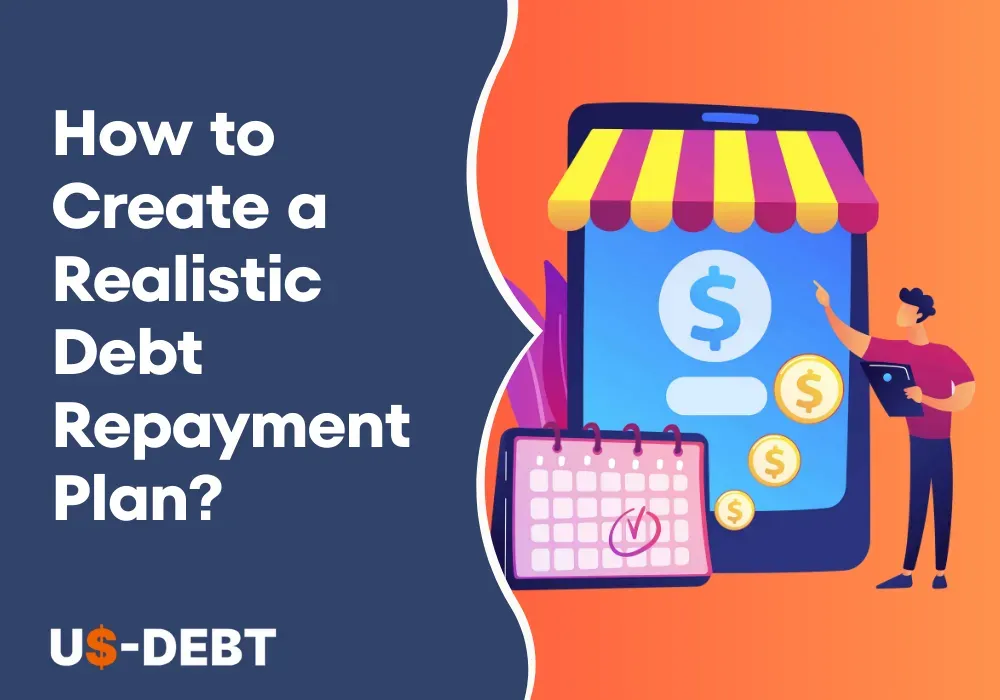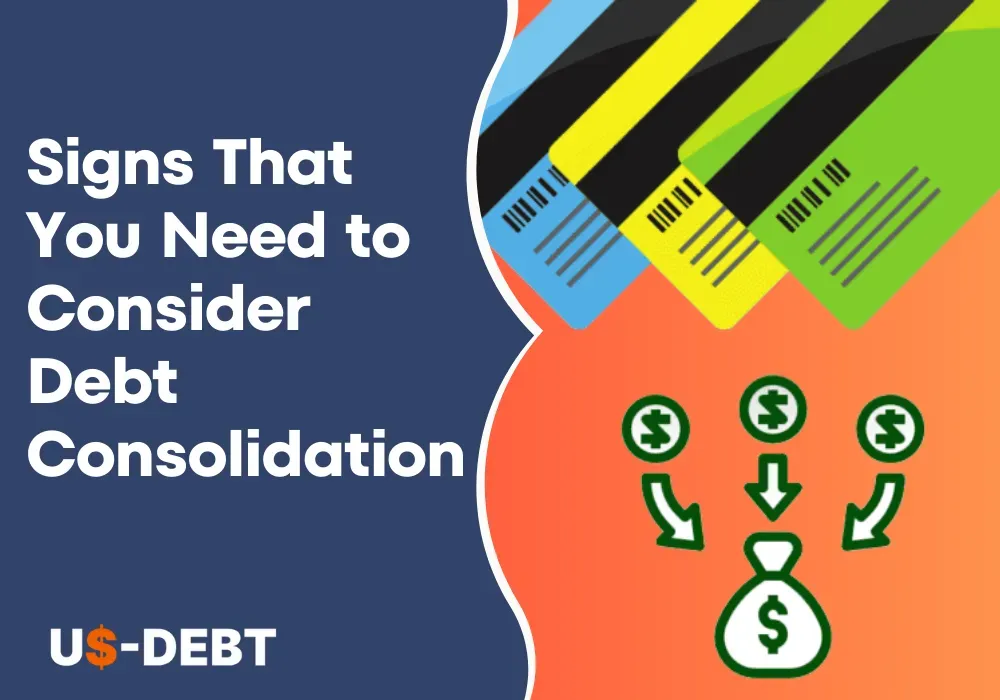Are you burdened by mounting debts? It's essential to explore your options carefully before enrolling in a debt relief program. We will explore the five essential aspects in this post that you have to take into account before choosing. Having an understanding of these elements can help you decide wisely whether you are bargaining with credit card debt, medical expenditures, or other financial obligations. So let's get started and learn more about debt reduction services.
Â
Read More:Â US National Debt: A Guide to Understand America's Financial BurdenÂ
Â
Understanding Debt Relief Programs
Debt relief programs are designed to assist individuals in managing and reducing their debts. They are designed to offer financial assistance and aid people in regaining control over their finances. There are several debt relief options accessible in the US, such as credit counseling, debt negotiation, and debt consolidation.
Debt consolidation involves combining multiple debts into a single, more manageable loan. It simplifies payments, potentially lowering interest rates and monthly installments. The benefit is that it provides a structured approach to debt repayment. However, it may require collateral or a good credit score.
Debt settlement entails negotiating with creditors to lower the total amount owed. It can provide a faster route to debt reduction, but it may impact credit scores and involve potential tax implications.
Credit counseling provides professional guidance and education to help individuals develop a personalized plan for debt repayment. The benefits include financial education, budgeting assistance, and negotiating lower interest rates. However, it may not reduce the total debt amount.
It's crucial to comprehend the benefits and drawbacks of the several debt relief programs before choosing the one that best suits your financial needs and objectives.
Â
Factors to Take into Account Before Participating in Debt Relief Programs
Â
Factor #1: Financial Situation Assessment
Before enrolling in a debt relief program, evaluating one's financial situation is of utmost importance. It lays the foundation for making an informed decision and selecting the most suitable debt relief option. Understanding one's financial standing helps identify the severity of the debt problem, set realistic goals, and develop a viable repayment strategy.
To assess their financial situation effectively, individuals should consider the following checklist:
Total Amount of Debt: Calculating the total debt owed is crucial as it provides a clear picture of the overall financial burden. This includes credit card debts, loans, medical bills, and other outstanding obligations.
Monthly Income and Expenses: Analyzing monthly income and expenses helps determine the available funds for debt repayment. It also highlights potential areas where adjustments can be made to free up additional funds for faster debt clearance.
Credit Score: Checking one's credit score is essential as it directly influences the options available. A higher credit score may open up more favorable debt relief programs, while a lower score might limit the choices.
Factors significantly impact the choice of debt relief program:
If the total amount of debt is relatively manageable and the credit score is decent, individuals may opt for debt consolidation. This approach simplifies payments, reduces interest rates, and provides a structured repayment plan.
If the debt amount is substantial and the credit score is compromised, debt settlement might be considered. Negotiating with creditors to settle for a reduced amount could be a quicker route to debt reduction.
Credit counseling may be suitable for those with stable incomes but seeking financial education and guidance. It can help them create a budget, negotiate with creditors for lower interest rates, and develop a sustainable debt repayment plan.
Â
Factor #2: Researching Debt Relief Companies
Choosing a reputable and trustworthy debt relief company is crucial to ensure a successful and reliable debt management process. Working with the appropriate business can significantly impact your ability to achieve your financial objectives and safeguard your interests.
Here are some essential tips for researching debt relief companies:
Checking Credentials and Accreditations: Verify that the company you are considering is licensed and accredited by reputable organizations such as the American Fair Credit Council (AFCC) or the National Foundation for Credit Counseling (NFCC). These credentials demonstrate adherence to industry standards and ethical practices.
Reading Online Reviews and Testimonials: Conduct a thorough review of online platforms to gather insights from previous clients. Look for genuine reviews and testimonials to gauge the company's reputation, customer satisfaction levels, and success stories. You can use this feedback to support your decision-making.
Consulting with Consumer Protection Agencies: Consult with consumer protection institutions like the Better Business Bureau (BBB) or the Federal Trade Commission (FTC) to discover if there have been any legal issues or complaint concerns with the debt relief business. These agencies provide valuable information on companies that may have engaged in fraudulent activities or have a history of consumer complaints.
It's essential to be vigilant and watch out for potential scams and red flags when researching debt relief companies. Beware of companies that make unrealistic promises, charge high upfront fees, or pressure you into making hasty decisions. Avoid companies that guarantee to eliminate all your debts or claim to have special relationships with creditors. Additionally, be cautious of companies that lack transparency in their communication or do not provide clear information about their services and fees.
Â
Factor #3: Understanding Program Costs and Fees
When considering debt relief programs, it's crucial to comprehend the costs and fees associated with them. Here are the common fees you may encounter:
Consultation Fees: Some debt relief companies charge an upfront consultation fee. This fee covers the assessment of your financial situation and the provision of personalized recommendations. It's important to inquire about this fee and understand what it includes.
Monthly Service Fees: Debt relief companies may charge a monthly service fee for managing your debt repayment plan. This fee covers administrative tasks, communication with creditors, and monitoring of your progress. It's essential to consider these fees and ensure they align with your budget.
Settlement Fees (if applicable): If you opt for debt settlement, there may be settlement fees involved. These fees are typically a percentage of the total debt amount that is settled. It's crucial to comprehend the pricing schedule and make sure it's reasonable and open.
Understanding these costs and fees upfront is crucial for making an informed decision. It allows you to evaluate the affordability of the program and determine whether it fits within your financial capabilities. By knowing the fees involved, you can better plan your budget and avoid any surprises or hidden charges along the way.
To ensure you choose the most cost-effective debt relief option, it's advisable to compare fees across different companies. Take the time to request fee breakdowns from multiple providers and compare them side by side. Consider not only the fees themselves but also the services and benefits offered in return. Remember, the lowest fee may not always indicate the best value if the company lacks credibility or fails to provide comprehensive support.
Â
Factor #4: Potential Impact on Credit Score
The credit score may be negatively affected by enrolling in a debt relief program. It's critical to comprehend how this influence manifests itself. Debt relief programs can be reported to credit bureaus, and the reporting can vary based on the type of program you choose.
There are typically two types of effects on credit scores:
Temporary Effects: Initially, enrolling in a debt relief program may hurt your credit score. This is because creditors may report that you are not making full payments on your debts. However, as you progress through the program and make consistent payments, your credit score can gradually improve.
Long-Term Effects: Certain debt relief options, such as debt settlement, can have a long-term impact on your credit score. Debt settlement involves negotiating with creditors to settle your debts for less than the full amount owed. While it provides debt reduction, it may result in a negative entry on your credit report. This negative entry can remain on your credit report for several years and may impact your capability to get credit in the future.
To minimize credit score damage during a debt relief program, consider the following advice:
Make Timely Payments: Ensure that you make payments on time as required by your debt relief program. Timely payments can help demonstrate responsible financial behavior and gradually improve your credit score.
Maintain Open Communication: Stay in touch with your creditors and keep them informed about your participation in a debt relief program. Open communication can help establish goodwill and potentially minimize negative reporting.
Focus on Rebuilding: Once you complete a debt relief program, shift your focus to rebuilding your credit. This can include consistently paying bills on time, maintaining low credit card balances, and using credit responsibly.
It's important to remember that controlling your debt is an initial step toward financial security, even though debt relief programs could have short-term or long-term negative consequences on your credit score. With time and responsible financial practices, you can rebuild your credit and improve your overall financial health.
Â
Factor #5: Alternative Options to Debt Relief Programs
As debt relief programs can be effective for many individuals, it's important to explore alternative solutions before enrolling. Here are two viable alternatives to consider:
Budgeting and Financial Planning: Creating a realistic budget and adopting smart financial planning strategies can help you regain control over your finances and pay off your debts. By carefully managing your income and expenses, you can allocate funds towards debt repayment and avoid accumulating more debt. Budgeting also allows you to identify areas where you can cut expenses and save money.
Negotiating Directly with Creditors: Another alternative is to contact your creditors directly to discuss repayment options or negotiate more favorable terms. Some creditors might be open to working with you to create a repayment strategy that suits your financial situation. This can include reduced interest rates, lower monthly payments, or extended repayment periods. You might be able to keep the costs of debt relief programs at a minimum by negotiating with your creditors.
Each alternative option has its advantages and disadvantages:
Budgeting and Financial Planning: The advantage of this approach is that it empowers you to take control of your finances independently. It encourages disciplined financial habits and can help you develop long-term financial stability. However, it may require self-discipline and may take longer to achieve debt repayment goals.
Negotiating Directly with Creditors: The advantage here is the potential for customized repayment plans and possible reductions in interest rates or fees. It can also assist in maintaining a positive relationship with your creditors. However, not all creditors may be open to negotiations, and it may require strong communication and negotiation skills on your part.
Before enrolling in a debt relief program, it is highly encouraged to explore these alternative options. They may provide viable solutions tailored to your specific financial circumstances, potentially avoiding the need for external debt relief assistance. However, it's important to assess your situation objectively and realistically. If your debts are overwhelming, and alternative options seem unattainable, a debt relief program can still be a valuable pathway toward regaining financial stability.
Â
Conclusion
Enrolling in a debt relief program is a significant decision that requires careful consideration. By evaluating your financial situation, researching reputable companies, understanding program costs, assessing the consequences on your credit score, and exploring alternative options, you can make a smart decision that aligns with your goals. Remember, taking control of your debt is a step towards a brighter financial future.



